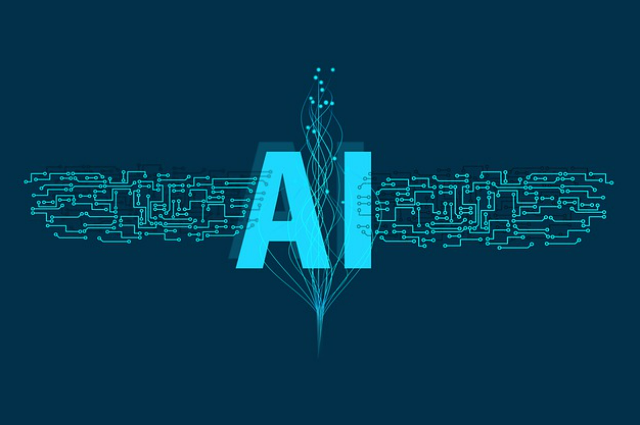
A. Introduction
Artificial intelligence is the ability of machines to make intelligent decisions. AI enables devices to perform tasks that would have required human intervention. It greatly helps in doing repetitive tasks at high speeds, hence maximizing the productivity of consumers. In the last decade, AI has witnessed exponential performance gains. AI is invisibly embedded all around us, be it Google search, Netflix recommendations, Alexa and many more. AI has traditionally focused on reasoning, learning and natural language processing.
Artificial intelligence has paved a new dimension for the new internet – web 3.0; experts believe it will be pivotal in reducing human role for specific functions in web 3.0.
Recent trends are emerging due to high data generation and increased internet connectivity - which is also a prominent feature of contemporary Indian society. AI has become increasingly essential to manage vast databases and fuel automation in industries.
B. Top trends in Artificial intelligence
B.1 Artificial Intelligence and Finance:
According to Forbes, 70% of finance firms are using Artificial intelligence. AI has been mainly deployed in assessing and managing risk and fraud, analyzing customers' creditworthiness, and chat-Bots. The emergence of Algorithmic Trading has shown upswing improvement in financial decision making by firms and retail customers. Algorithmic Trading uses machine learning algorithms in real-world financial markets to make profits. Thus, AI has helped achieve financial inclusion to a greater depth
B.2 Voice Analytics:
There are billions of voice-enabled devices around us. It is difficult to imagine our world without Google Assistant, Siri, or Alexa. The tight integration of virtual assistants in human life has helped make our lives comfortable. This has also led to the contested debate of data protection and user privacy.
The rise of voice-based typing has helped multilingual people and differently-abled people connect better to their communities. Pre-voice based typing phase was dominated using the English QWERTY keyboard, which often restricted vernacular language typing. The use of voice-based typing helped communities enjoy the bonding role of language.
The ability of intelligent devices to connect to security systems, Television, air conditioners have changed the way people interact with these devices.
E-Commerce companies faced a fundamental issue in the Indian Rural population which often lacked the skills to navigate through the app; this problem was solved by introducing voice-based navigation. Companies made substantial growth by introducing different local languages for navigation. According to industry estimates, voice- based shopping is expected to extend to $ 40 billion by the end of 2022.
B.3 Cloud Integration
The blend of AI and cloud has helped perform horse-power intensive AI tasks on mobile computing devices. Mobile apps use AI via the cloud to deliver high customer satisfaction on a consumer scale. Image recognition, recommendation engines, search engines, to name a few, work on this technology.
On a larger scale, cloud integration is helping businesses to become more productive and adopt a data-driven insight approach. Thus, improving the overall efficiency of the economy.
AI is getting integrated to optimize the workload and automate specific tasks. Cloud integration is also helping in categorizing data and obtaining meaningful insights from massive databases.
AI-Cloud integrated tools are also offered as Software as a Service (SaaS) to deliver excellent utility and functionality to customers, making people's lives more straightforward.
B.4 Robotic Process Automation (RPA)
RPA technology builds, deploys, and manages robots that imitate human interaction with digital systems. This technology can understand what is on screen, navigate, recognize, draw out data and perform specified actions. RPA is resilient to workload peak, reduces manual errors, saves costs, and increases organizations' productivity.
Robots can perform lower value and repetitive work like moving files and folders, performing trades in the stock market through inputs of Algorithmic Trading and many more. RPA also helps maintain a good work-life balance of employees, improving their overall happiness.
B.5 AI Optimized Hardware
AI optimized hardware has opened a new world of possibilities for improving the user experience. Smartphone companies use AI optimized chips to deliver better computational and photographic capabilities. Budget phones with limited hardware use AI to give better performance.
A conventional chip cannot support Artificial Intelligence tasks, a new generation of AI-capable chips are being developed. Hardware optimized AI solutions enable Google and Apple smartphones to outperform the bleeding edge non-optimized camera hardware, thereby improving the end-user experience to a great extent.
B.6 AI Talent Gap
AI popularity is growing at an exponential rate. However, practices and maturity vis-à-vis AI remain motionless – subjecting organizations stagnancy and skill-less growth. An industry survey revealed "lack of skilled people and difficulty hiring as top challenges to AI." A similar survey reaffirmed the finding – "there are about 300,000 AI professionals worldwide, but millions of roles available." The enrolment of students in AI courses has seen a significant increase, problems of qualitative education and application-oriented learning are still relevant.
Promoting online learning platforms and focusing on application-based learning should be the prime focus of governments worldwide. I believe the real potential of Indian talent is still untapped; steps must be taken to fill the AI talent void to substantiate the vision of Aatmnirbharta.
C. Conclusion:
The benefits of AI are immense. However, several ethical questions like unemployment due to automation, the safety of self-driving cars, Racial behavior of AI, lethal autonomous weapons, misuse of AI have been raised on the feasibility of AI. Hence, it is essential to evaluate the autonomy of AI through transparency in the development process. Companies should promote Racial inclusiveness in the developmental teams to eliminate racial behavior by some Artificially intelligent systems.
The capabilities of Artificial intelligence are enormous. The positives of AI far outweigh the negatives. Further integration in medicine, teaching, economic planning might benefit society. Introducing artificial intelligence to school students will help fill the talent void and further the vision of Aatmnirbhar Bharat.
